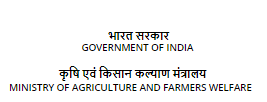NINFET SATHI – A Retting Accelerator of Jute and Mesta
Background:
In major jute growing areas of India and Bangladesh, conventional retting involves the submergence of 2-3 layers of jute plants in water bodies with banana pseudo-stem and mud, and jute fibres are extracted after 20-25 d of retting. The retting process involves microbial removal of pectin, hemicellulose, and other water-soluble materials from the bark of jute plants and results in the separation of fibre from the plant. Inadequate availability of retting water with the non-availability of proper retting technology renders the production of low-quality fibre. Thereby, the farmers are often getting deprived of their hard earn produce, demotivated and very often opt for alternative cultivation practices over jute:
Technology Details:
The present technology reported the application of a non-microbial retting formulation trademarked as NINFET-Sathi as a microbial food supplement for improved retting of jute. Application of NINFET-Sathi resulted in 8-10.5% higher yield of jute fibre with 1-1.5 grade improvement within 10-12 d over conventional retting. It accelerated the growth of native pectinolytic and xylanolytic microbial populations in the retting water. This formulation improved bundle strength by 10.8-15.3%, fineness by 14.7-22.8%, and colour by 27.9-33.1% with low defects (0.56-0.61% by weight) and root content (7.11-7.68% by length) leading to higher fibre quality (TD-2) over conventional retting (TD-3) consistently for three years of storage. Long storability also offered scopes of distant transport of NINFET-Sathi formulation to jute growing areas with difficulty to reach.
NINFET-Sathi has already been established as a proven technology for improved retting of jute and near future, it may cater for the need of the larger farming community for harnessing better income.


